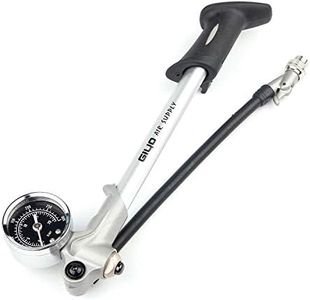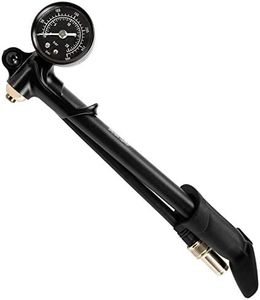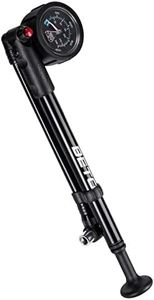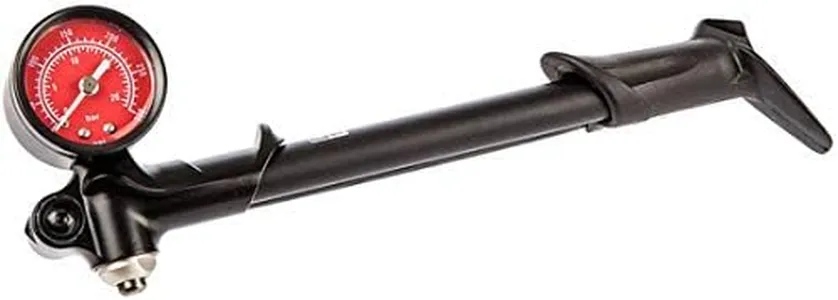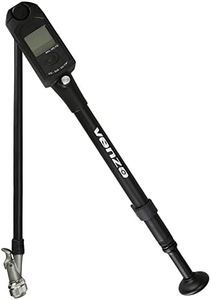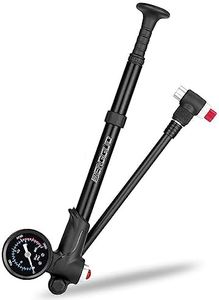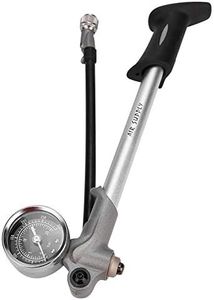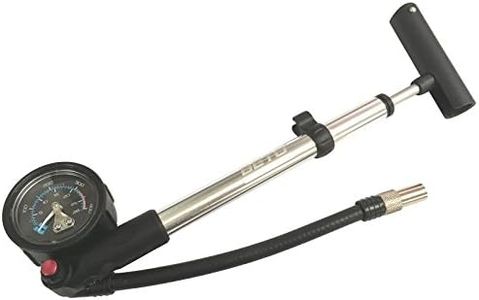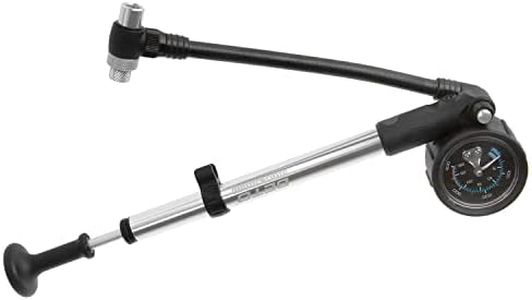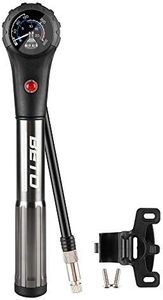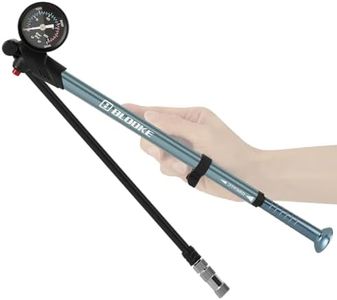We Use CookiesWe use cookies to enhance the security, performance,
functionality and for analytical and promotional activities. By continuing to browse this site you
are agreeing to our privacy policy
10 Best Shock Pump
From leading brands and best sellers available on the web.Buying Guide for the Best Shock Pump
Selecting the right shock pump is important if you own a bike with air suspension, such as mountain bikes or some e-bikes that feature air shocks or air forks. The shock pump allows you to precisely adjust and maintain the air pressure in your suspension, which directly influences your ride comfort, handling, and overall performance. A well-chosen shock pump not only ensures you hit your ideal pressure easily but also extends the life of your equipment by allowing proper maintenance. Consider what kind of biking you do and how often you'll use the pump, as these factors will help determine the set of features to prioritize.Maximum Pressure RatingMaximum pressure rating refers to the highest pressure, measured in PSI or bars, that a shock pump can deliver. Suspension components often require high pressures—much higher than regular tires. Lower-rated pumps typically go up to about 200 PSI, which is fine for entry-level or recreational use, while advanced suspensions may require 300 PSI or more. Consider the specifications of your bike’s suspension: if it requires higher pressures, ensure the pump can handle at least 50 PSI above your needs for comfortable operation and durability.
Gauge Type (analog vs. digital)Shock pumps come with either an analog (dial) or digital pressure gauge to show you how much air is inside your suspension. Analog gauges are classic, straightforward, and don't need batteries, but they might be harder to read precisely—especially at higher pressures. Digital gauges, on the other hand, offer more accurate and instantly readable results, which can be helpful if you need exact pressures. If you're someone who likes precision or often rides technical terrain, a digital gauge might suit you. For occasional or general use, analog may be entirely adequate.
Hose and Valve Head DesignThe pump’s hose and valve head connect it to your suspension and are important for both ease of use and avoiding air loss. Hoses with a swiveling or flexible design make it much easier to attach to hard-to-reach valves and reduce strain on the valve. Some heads feature a bleed valve, letting you fine-tune pressure without removing the pump. When considering this feature, think about the set-up of your bike—if you have complex or crowded suspension designs, a flexible hose and a good bleed valve are worthwhile.
Material and Build QualityA shock pump’s build quality influences its durability and how well it seals pressure. Pumps with metal barrels and quality seals often last longer and provide more consistent performance, but may be heavier or more expensive. Lighter, plastic pumps can be more portable but might wear faster. If you plan to keep your pump in a workshop or use it frequently, sturdy build quality should be a priority. For occasional use or carrying on rides, lighter, compact pumps can be more convenient.
PortabilityPortability relates to the size and weight of the pump. Some shock pumps are compact and fit easily in a backpack for on-the-go adjustments, while others are larger and more suited to being kept at home or in a garage. If you want to adjust your suspension during long rides or trips, look for smaller, lighter pumps. If you plan on setting pressure once and rarely changing it, or mainly maintain your bike at home, size is less of a concern.
